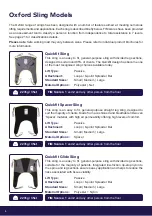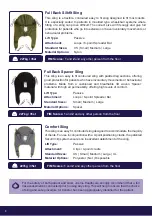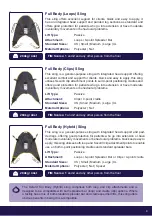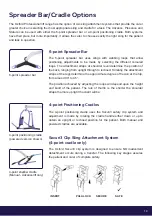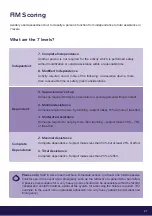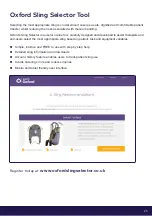
10
Toileting Low Sling
This sling is designed specifically to facilitate the toileting process, offering good
access to clothing. Made from durable, heavy-duty polyester, it incorporates a
removable, elasticated waist belt for added support and security. It is not a
general purpose sling and will only suit around 25% of clients.
Lift Type:
Passive
Attachment:
Loops / 6-point Spreader Bar
Standard Sizes:
XS | Small | Medium | Large | XL
Material Options:
Polyester
FIM Scores: 2
or
3
following careful assessment
SWL
284kg / 44st
Comfort Access Padded Sling
This sling, with head support, has been designed specifically to facilitate the
toileting process, allowing easy access to clothing. For use in conjunction
with a 4-point positioning cradle, the patented Securi3 clip system ensures
no inadvertent detachment of the sling. It is not a general purpose sling and
will only suit approximately 25% of clients.
Lift Type:
Passive
Attachment:
Clips / 4-point cradle
Standard Sizes:
Small | Medium | Large
Material Options:
Polyester
FIM Scores: 2
or
3
following careful assessment
SWL
227kg / 35st
NOTE: A thorough risk assessment MUST be carried out when using the Access sling as it can be unsafe when used with the wrong patient.
Access Padded Sling
This sling has been designed specifically to facilitate the toileting process by
allowing excellent access to clothing. It is an easy to fit sling, fully padded for
additional comfort. It is not a general purpose sling and will only suit around
25% of clients. Available with or without head support.
Lift Type:
Passive
Attachment:
Loops / 6-point Spreader Bar
Standard Sizes:
XS | Small | Medium | Large | XL
Material Options:
Polyester
FIM Scores: 2
or
3
following careful assessment
SWL
227kg / 35st
NOTE: A thorough risk assessment MUST be carried out when using the Access sling as it can be unsafe when used with the wrong patient.
Toileting slings by their very nature have large apertures to allow easier access to clothing
and to help facilitate the toileting process. This can pose safety concerns due to the inherent
risk of a patient falling through the sling, especially those with low muscle tone. A thorough
risk assessment MUST be carried out prior to using this style of sling to ensure a dignified,
comfortable and safe transfer takes place.




